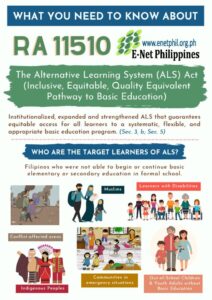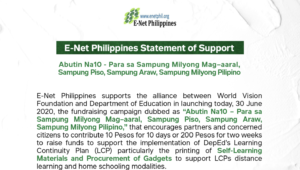
Blog
RESOURCES
Recommendations on Senate Resolution 392 – Free Internet Access in Public Spaces Act
 Loading...
Loading...
(Submission to the Committee on Basic Education, Arts and Culture, 10 June 2020)
Due to the pandemic COVID 19 crisis and the subsequent school closures, the Department of Education has launched the “DepEd Commons,” an online educational platform for public school teachers and learners that contains the 5-step process of accessing it and modules arranged by grade level and subject. However, skills and readiness of teachers, parents, and students to online learning, absence of gadgets, access to internet, and inefficient connection, absence of electricity remain the challenges from taking full advantage of using this platform specially among poor teachers and students in remote areas. In the June 9, 2020 interview posted in DepEd FB page, DepEd Secretary Leonor Magtolis Briones claimed there were almost 8 millions subscribers to DepEd Commons, but still this way behind the 28 millions affected students in formal education both in public and private schools, and more than 2 millions ALS enrollees. Also, data on affected indigenous people and learners with disabilities should be considered and included in the updating of DepEd education sector analysis called Basic Education Sector Analysis (BESA) as basis for developing a five-year education sector plan called Basic Education Development Plan 2021-2025 (BEDP 2025).
The issue on access to quality and equitable education becomes more challenging now and even after the lockdown that it may bring consequent risk of inequity, discrimination and deepening of the digital divide. This has been articulated by teachers, parents and learners who are coming from geographically isolated, remote areas, who have no access to internet connectivity, gadgets, source of electricity, data connection, and above all, the skills and readiness in the use of communication technologies and support mechanism in undertaking virtual education, distance education, alternative delivery modes, mixed print, radio and TV instruction or blended learning, remain a challenge. There are 7,144 last mile schools in remote parts of the country, where power and Internet are not available.
While ICTs and digital technologies can provide a temporary solution to the current crisis, it is essential to understand that it is a temporary solution that can never replace classroom teaching and learning and the invaluable face-to-face interaction between the teacher and student and among students. Effective digital learning requires more teachers with professional tools inspired with respect for diversity of culture, languages and traditions as well as pedagogical choices, not imposed by private ICT providers. All schools should be connected to the Internet free of charge, with the necessary access restrictions and security protocols (filters, firewalls, etc.) to guarantee pedagogical usage. The provisions and use of the learning software must be affordable for all and consider cost implications with the advent of interest of private investors into education. There is also a need to determine the impact of technology in the potential hazards to children’s health and safety, vulnerability to abuse and cyber-bullying, and its effects on young children’s learning environment.
Recognizing the importance of the use of information and communication technology in education, it may ensure learning continuity in case of sudden suspension or cancellation of classes caused by pandemics, endemics, outbreaks, and other emergency or crisis situations. It may also mitigate the impact on the quality of education of the learners thru an online learning platform or distance education modules, blended learning of online and offline modes of delivery, designed to be adopted in various emergency situations among learners, teachers, and parents in the community.


